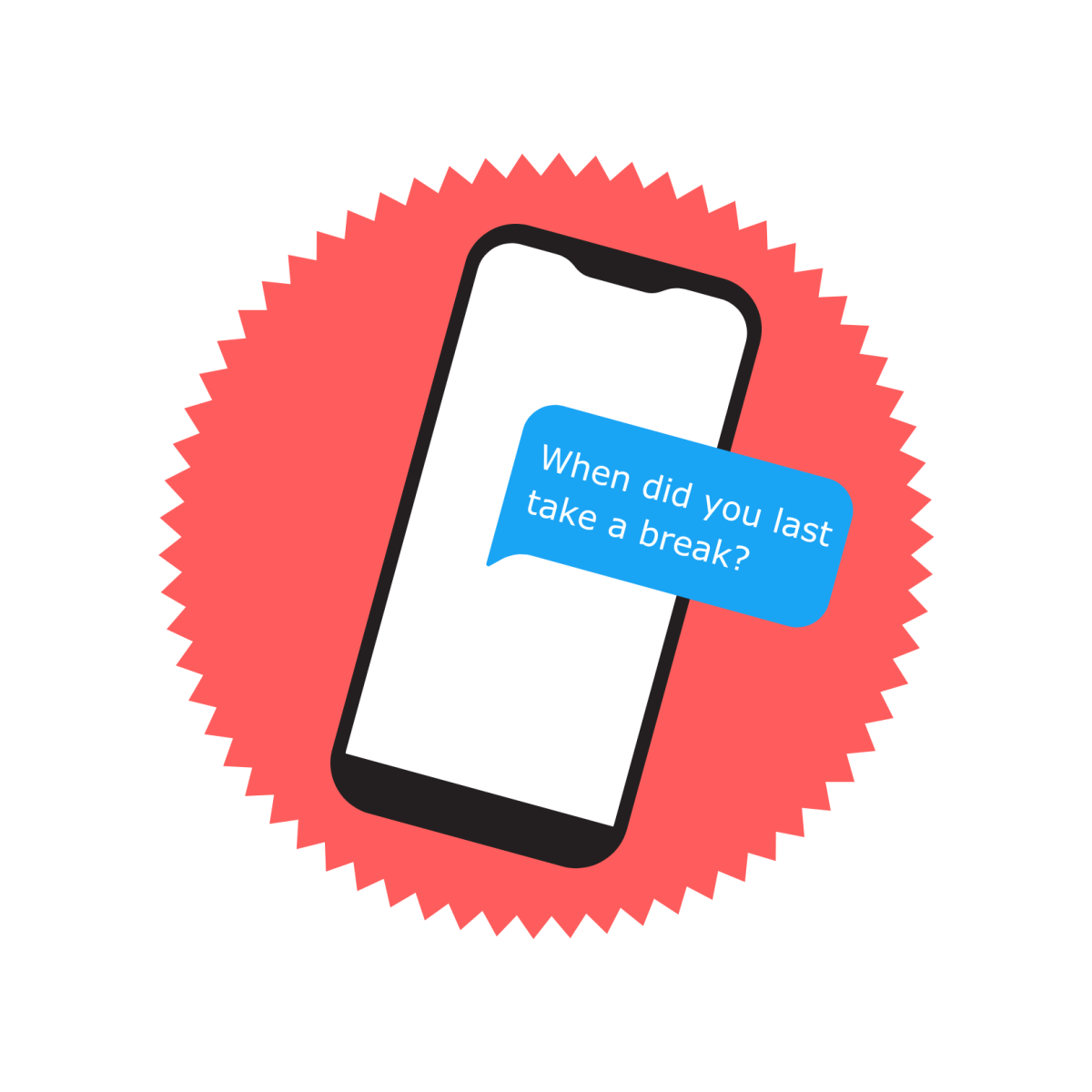Almost every time I wait for the Metro J Line, I spot them: zombies. Eyes looking down at about a 45 to 70-degree angle, necks hunched like a branch about to give up on its foliage weight, and with no awareness of how they may be damaging themselves with their poor posture. They really do resemble zombies, but they are actually everyday people looking down at their mobile devices.
“In this digital world, the design of phones often encourages this posture, where we hold the device low in our hands, causing us to lean forward leading to significant extension on the upper cervical area and flexion on lower cervical area commonly referred as ‘forward head posture,’” said Dr. Amna Taufiq, Teaching Fellow at NUR International University in Pakistan.
“Additionally, this posture often feels more comfortable for long periods, contributing to poor habits.”
Taufiq recently published health science research on the association between nomophobia (no-mobile-phone phobia) and text neck. “Over time, this becomes a habitual position, leading to ‘text neck,’ which stresses the muscles and structures in the neck,” Taufiq added.
Text neck refers to the pain and damage accumulated as people use their mobile devices in a forward head posture for too long, too frequently. It is an overuse syndrome that can lead to neck pain due to stress in the neck; it can potentially lead to degenerative damage in the area of the spine that allows for movement of the neck.
“Repetitive stress from tasks like prolonged sitting, especially at computers or mobile devices, can lead to muscle fatigue and soft tissue damage along with facet joint locking and dysfunction,” said Taufiq.
There are other health terms linked to mobile device usage, like cell phone elbow and texting thumb (yes, these are real terms). In 2019, researchers in India concerned for college students reported a significant correlation between nomophobia, hand discomfort and neck pain. The 113 participants specifically selected to exclude potential alternative sources of pain or discomfort were between the ages of 17 and 25. They filled in vetted, valid forms that scored neck disability, hand discomfort and nomophobia.
The nomophobia questionnaire contained concepts like feeling uncomfortable not having a smartphone to access information and feeling anxious about being unable to communicate with others without a smartphone. The neck and hand discomfort questionnaires consisted of questions about the subjects’ ability to conduct daily tasks and the pain experienced. The linear scoring systems allowed for statistical correlation analyses.
About 70% of participants ranked as moderately nomophobic, and 20% ranked as severely nomophobic. More than half of them reported no pain in the neck, yet about 13% had neck pain scores indicating some severe pain — including three participants describing the worst imaginable pain in the neck. Over 50% reported experiencing headaches due to prolonged smartphone use.
Participants also reported discomfort in different parts of their dominant hand. They were given a diagram that illustrated a hand sectioned into multiple parts and recorded the frequency of pain experienced in each section. Almost 30% of them reported pain in the thumb or lower palm.
Cal State LA Chicana/o and Latina/o studies graduate student Manuel Ibarra has experienced pain in the wrist and headaches likely related to heavy phone use.
“What I have noticed since the increase of time usage on my phone, my eyesight gets really tired,” said Ibarra. “So that is correlated, because when my eyes start getting tired, I get heavy migraines.”
Biochemistry undergraduate Jay Gonzalez has been spared from this new epidemic. His phone use mainly consists of checking Canvas and communicating with loved ones.
“I change the music, and then I just put it in my pocket,” he said.
I am aware that we college students tend to be on our phones quite a lot, so let us be mindful. According to Taufiq, the affected neck area has a limited regeneration capability as some of the tissues involved have low blood supply.
“Soft tissues like muscles and ligaments may show some healing with rest and therapy, but cartilage, such as in the cervical discs, has a slower regeneration rate,” said Taufiq. “Chronic overuse can lead to degeneration, making full recovery more challenging without intervention.”
Concerns for younger users who spend a long time on mobile devices have been raised. One study of more than 2000 child participants found that about a quarter of that population experienced neck pain, with about 90% of those children suggesting it was linked to device usage.
To prevent text neck, there are suggestions like “bring your 10-ounce device up to your 10-pound head, not the other way around.” However, no preventative trials have been conducted to show that this will prevent text neck. As for texting thumb, a study reported 100 percent recovery for 70 subjects experiencing pain in the upper limbs after physical rehabilitation efforts. With overuse injuries, limiting the activity and being conscious of your posture during usage is usually a good idea.
How many text-neck zombies do you see if you look up right now? Consult your doctor if you tend to experience neck or hand discomfort.






